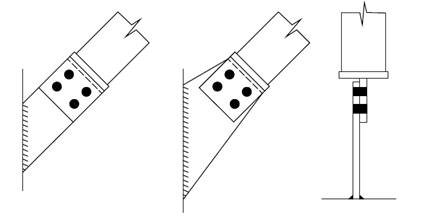Technical
AD 519: Equivalent horizontal forces and combinations of actions
Recent questions to SCI’s Advisory Desk have shown that some designers are unclear whether equivalent horizontal forces (EHFs) should be applied to a structural frame in serviceability and accidental load combinations.
EHFs are intended to allow for frame imperfections such as a lack of verticality (the frame is out of plumb), which is a geometrical imperfection as described in BS EN 1993-1-1:2005 clauses 5.3.1 and 5.3.2. A lack of verticality of the structural frame produces lateral effects, since the vertical loads are eccentric to the base positions. Frame imperfections lead to increased design forces in a stability bracing system, or increased sway moments in a continuous frame. EHFs must be included in all ultimate limit state verifications, unless the condition discussed below is satisfied.
Serviceability load cases are intended to determine the effects of variable actions on the users of a building and on brittle finishes. EHFs do not have to be included in serviceability load combinations.
Accidental combinations of actions are an ultimate limit state verification and therefore the EHFs should be included.
EHF do not need to be included in ultimate limit state verifications when the externally applied lateral loads are relatively high compared to the vertical loads. As noted in BS EN 1993-1-1 clause 5.3.2 (4), EHFs need not be included when:
HED ≥ 0.15 VEd
where:
HED is the design value of the horizontal loads,
VEd is the design value of the vertical loads.
Contact: Liam Dougherty
Telephone: 01344 636555
Email: advisory@steel-sci.com












